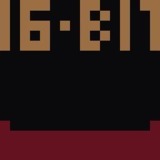Panzer Dragoon Retrospective - Part I: The Beginning
By iam16bit 0 Comments
Chapter I: Flight
Since the days when games were experiments by college students and engineers, shooters have been one of the oldest genres in gaming. Dating back to 1962 with the creation of Spacewar! and only growing in popularity with the release of Space Invaders and Asteroids in the late 70's. In 1981, Sega entered the genre with Zaxxon, an isometric shooter praised for it's pseudo 3D graphics. Two years later the rail-shooter sub-genre was created thanks to Star Wars Arcade and in 1985 Sega took the genre into the world of 16-bits with the release of Space Harrier. However little did Sega know that it would later serve as one of the influences for one of their own games when it came time to jump into the 3rd dimension.
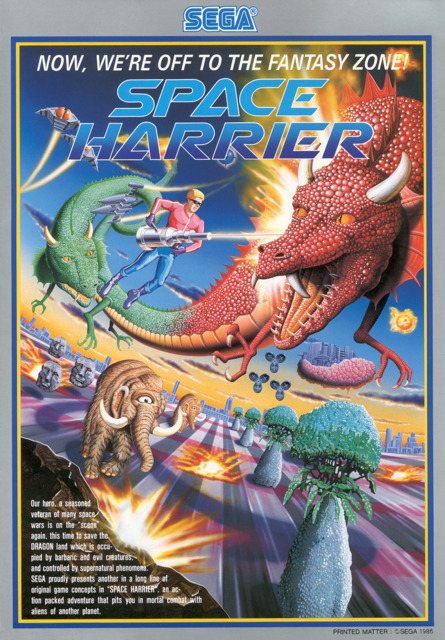
Our story begins in late 1993 as Sega was preparing for their 32-bit console, the Sega Saturn. Wanting a new game that could show the Saturn's capabilities, they asked their employees for new concepts. This wasn't the first time they had done so, the last internal contest led to the creation of their mascot Sonic the Hedgehog.
One of those who participated was 23 year-old Yukio Futatsugi, who had submitted proposals for several games. Futatsugi had been working at Sega for two years doing various tasks and assisting with games such as Shinobi for the Game Gear.
Sega had liked his proposal for a 3D shooter and in January of 1994 they made him lead of the recently formed Team Andromeda. The team consisting of 15 people included illustrator and character designer Manabu Kusunoki (Bonanza Bros., Knuckles Chaotix) composer Yoshitaka Azuma, who had never done a game soundtrack but had previously released several electronic music albums in the 80's and had done music for the NHK, and producers Yoji Ishii (Flicky) & Tomohiro Kondo (Shadow Dancer: The Secret of Shinobi, Panic!).
While planning the concept, Futatsugi and Kusunoki came up with the idea of having the player control a dragon rather than a spaceship. They felt the concept was a more original idea and that it's organic movements could show the 3D capabilities of the Saturn.
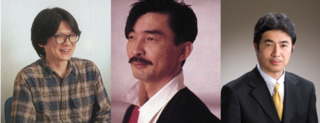
During this time Futatsugi also began writing the story and setting, inspired by the post-apocalyptic sci-fi & fantasy settings of anime and literature such as Naussica of the Valley of the Wind, The Wings of Honneamise, Dune by Frank Herbert, Arzach by Moebius ,who later was commissioned by Team Andromeda to illustrate the Japanese cover and concept art, and The Long Afternoon On Earth by Brian Aldiss which Futatsugi had read in his childhood.
Many in Team Andromeda were already fans of shooters, so the team drew inspirations from contemporaries of the genre such as Space Harrier, Star Fox, RayForce & StarBlade. The style and asthetics of the world were inspired by Ottoman and Turkish architecture instead of European architecture which Futatsugi felt was too strict. He also developed an elaborate backstory for the world, so far as creating a new language that mixed Latin, Ancient Greek and Russian.
Originally the game was to be called Armored Dragon. However feeling that the name was too bland, Futatsugi changed the title to Panzer Dragoon.
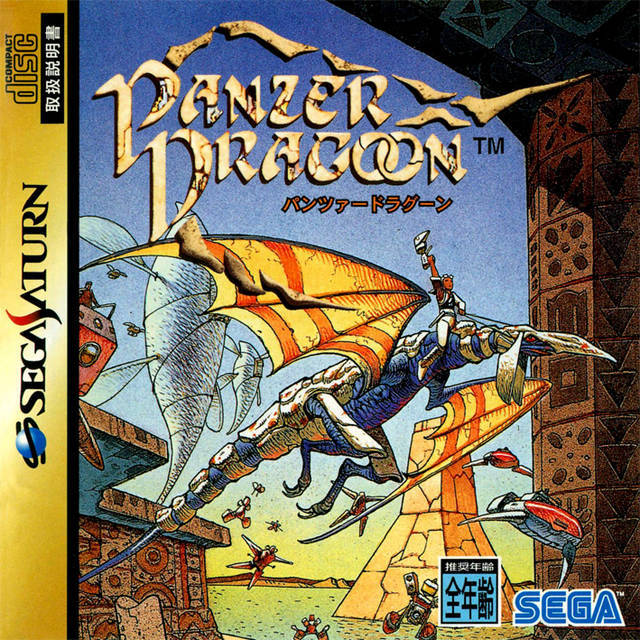
Development on Panzer Dragoon went through much adversity. Due to the complexity of the Saturn's architecture and Team Andromeda's lack of experience with the hardware which was still in development when production began. They had to develop a game on a console that had no final dev kit. These setbacks caused them to miss the Japanese Saturn launch in November 1994.
Because of this the game initially had to be developed on hypothetical hardware using SoftImage3D and SGI Workstations, they went so far as to having to create their own mapping tools and graphics library. The team weren't sure how far they could push the hardware, so to get around this they adopted a new design philosophy of keeping everything simple. This meant cutscenes, levels, scenery, objects and enemies had to be designed in a way that was easy for players to recognize and for the dev team to create.
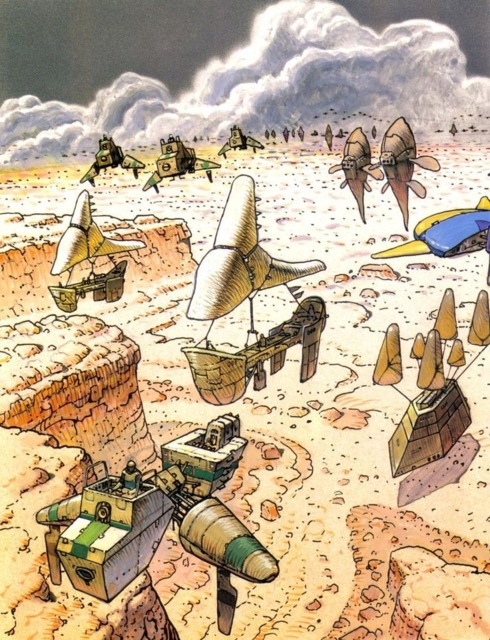
By the time they received a debug unit in mid-1994, the team ran into more issues with frame-rate. The problem was soon ironed out and the game was locked at 20 FPS
Despite these issues, Team Andromeda and Sega were confident about the project and development finished by the end of 1994. The last few months before release, Azuma began working on the soundtrack which comprised of orchestral and electronic pieces.
While Sega was preparing for the North American and European release, they had also altered the difficulty of both versions as to make them more challenging.
On March 10th 1995, the game launched in Japan. North American gamers thought they had to wait until September. However at that year's E3 Sega announced that the Saturn and five titles including Panzer Dragoon would launch that very day. Much to the chagrin of third-party developers and retailers, they launched on May 11th 1995. While European Saturn owners had to wait almost two months later.
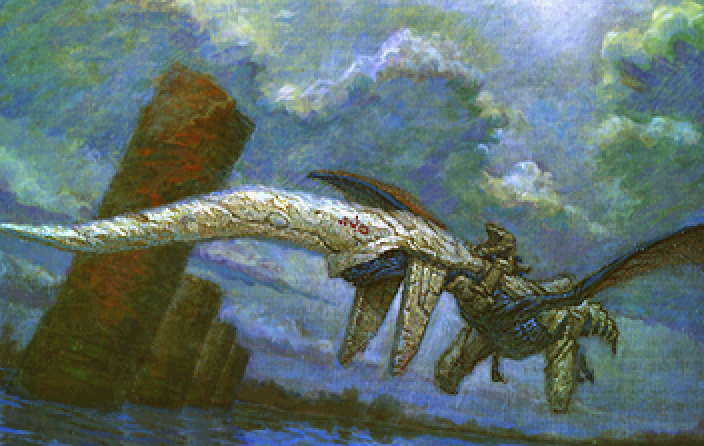
Chapter II: Panzer Dragoon
Panzer Dragoon takes place thousands of years after a great war between humans and bio-weapons ravaged the land. All advanced civilization was destroyed and humans were pushed to near extinction. Trying to survive in a world of vicious bio-engineered creatures, the remaining humans splintered off into tribes and small nations. One of these nations called The Empire discovered a mysterious ancient tower in the middle of a sea. During the excavation, the tower powered itself on and announced that Units-01 & Unit-02 had been activated.
Meanwhile a hunter and his party were traveling through a canyon. While the hunter was nameless in the NA and EU versions, he was named Keil Fluge in the Japanese release. After his party is wiped out by creatures called burrowers, he came to the end of the canyon where he saw the entrance to an ancient building.
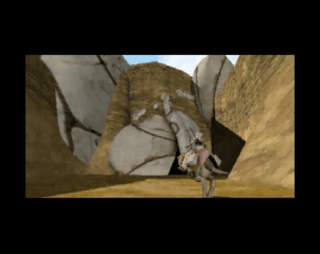
Upon entering, Keil found himself in a hangar where two dragons were in the middle of a duel. During the skirmish, the Blue Dragon's rider was fatally wounded and carried to Keil, who was observing the battle from below. In his final moments the rider used telepathy to explain his mission and pleads to Keil to finish it in his stead.
Armed with the rider's weapon and dragon, Keil took off to stop the Black Dragon from reaching the tower.
Gameplay was similar to other shooters but had an interesting twist. While the dragon flew in one direction, pressing either L or R let you change between four different directions which gave the player 360 degrees of aiming. This also meant enemies would come from all directions. While that may sound annoying, players were given a mini-map at the upper right hand corner that showed where enemies were and which direction you were facing.
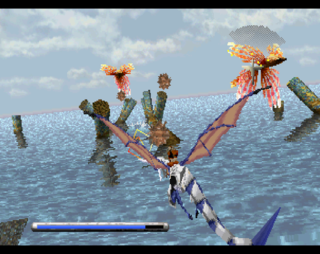
Tapping either A, B or C would fire your weapon, holding down either one of them would let you charge and aim a powerful homing laser. Pressing X, Y or Z would change your perspective. The game spanned six episodes, each of which ended with a boss battle.
After accepting the rider's request. The two flew through a submerged city where they were spotted and attacked by an Imperial Patrol Ship. After the fight, they then traveled over a vast desert inhabited by massive sandworms. However as soon as they exited a cave, they were soon confronted by the Black Dragon. During the battle the two were able to incapacitate it and escape. But they soon found themselves in the middle of a heavily fortified Imperial excavation site.
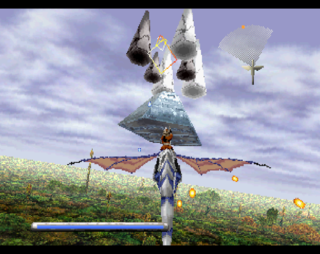
While fleeing the heavy fire, the two escaped into ancient ruins. Though it was soon discovered that it's not just Imperials they had to worry about as the ruins were overrun by Pure-Types, bio-engineered creatures created by the ancients as weapons of war. Upon exiting the ruins, they traveled over a large forest where an ambush was waiting for them. During this battle, the ancient tower summoned Pure-Types to attack Imperial Ships and sent more towards the Imperial City.
When the two reached the city, the attack had already begun and they fired upon as well. It's here that they once again met with the Black Dragon and the two raceed to the tower. When they arrived, the Black Dragon revealed itself to have been Unit-01 and mutated into a powerful dragon. Thus the final battle began.
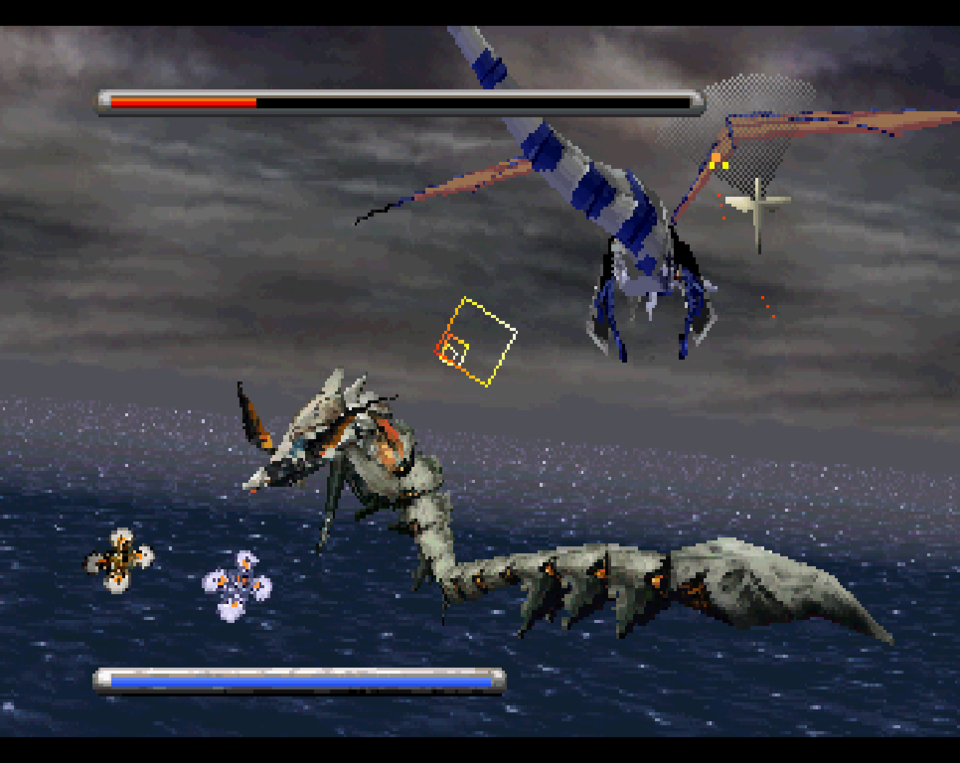
The final confrontation was fast and fierce but upon defeat, the Black Dragon reverted back to it's normal form and crashed to the sea. With the Black Dragon defeated and the Empire's plans ruined, the two headed into the tower. Knowing what lied ahead, the Blue Dragon summoned a force field around Keil and left him behind while it rushed further into the tower. It then fired a homing laser, causing the tower to emit a blinding light.
Keil then woke up in the middle of a desert. As he searched for the dragon, he took notice that surrounding him was the dragon's footprints. Keil then looked into the sky, unsure if the Blue Dragon survived.
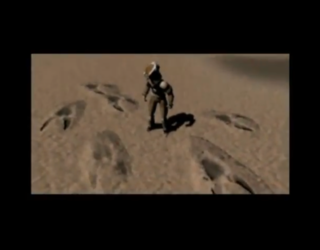
Upon completing the game, you were ranked by the percentage of enemies killed. Getting more that 90% would get you the Dragoon rank. If you beat the game on hard you would get an extra ending with a code to unlock Wizard Mode which sped the game up. During the end credits a series of paintings by Ryuichiro Kutsuzawa were displayed, chronicling Keil's journey.
Chapter III: Aftermath
Panzer Dragoon was a surprise success, selling more than 167,000 units in it's first week in Japan. Initially the game had been given very little coverage in the US. However that all changed after Sega's E3 surprise launch of the Saturn.
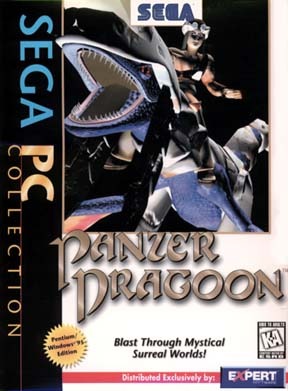
Critics praised Panzer Dragoon for it's gameplay, graphics and soundtrack. Though some criticism was aimed at it's simple story and lack of diverse weapons. The game received high ratings from many publications and was considered a must-have for the Saturn.
Two years after it's release, the game was ported over to PC by Expert Software. The port added a higher resolution and better lighting. Another version of the PC port was later released with the Diamond Edge 3D accelerator alongside Virtua Fighter Remix. Rather than rendering it in software, this version used hardware acceleration which allowed for a smoother frame-rate and a cleaner look. Since it was never released as a stand-alone product, it's become one of the rarest ports released.
The original PC port was also released on the Xbox as an unlockable in Panzer Dragoon Orta. To obtain it you need to either beat the game or log in 5 hours of gameplay.
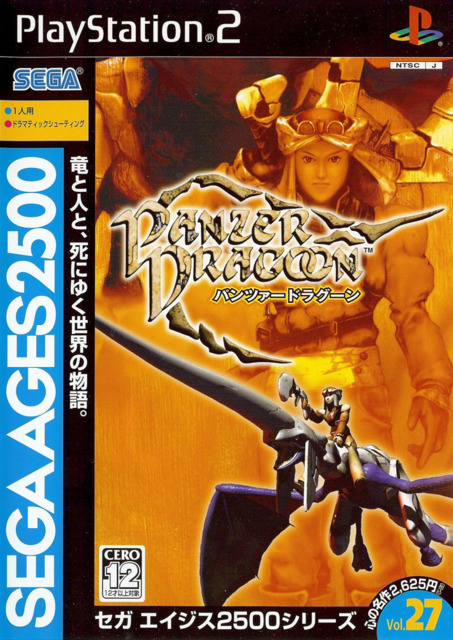
In 2006 Panzer Dragoon was ported to the PS2 under the Sega Ages 2500 brand, which was a collection of remastered games from Sega's past. This version differed greatly from the PC as it included both the Saturn version and a new arranged mode with better textures, new 3D models, anti-aliasing support and unlockable extras.
Panzer Dragoon ended up selling 370,000 units worldwide. Despite it's critical and commercial success, it didn't perform as well as Sega had hoped. However it was enough to warrant a sequel. Team Andromeda immediately began work on not one, but two follow ups. This was only the beginning of a new series.
This has been part one of a six part Panzer Dragoon retrospective. In the upcoming parts we'll be covering the three sequels, Zwei, Saga and Orta. Two spinoffs. One anime OVA and a look at the world of Panzer Dragoon and the people behind it.
Until then my friends, see you next time.
